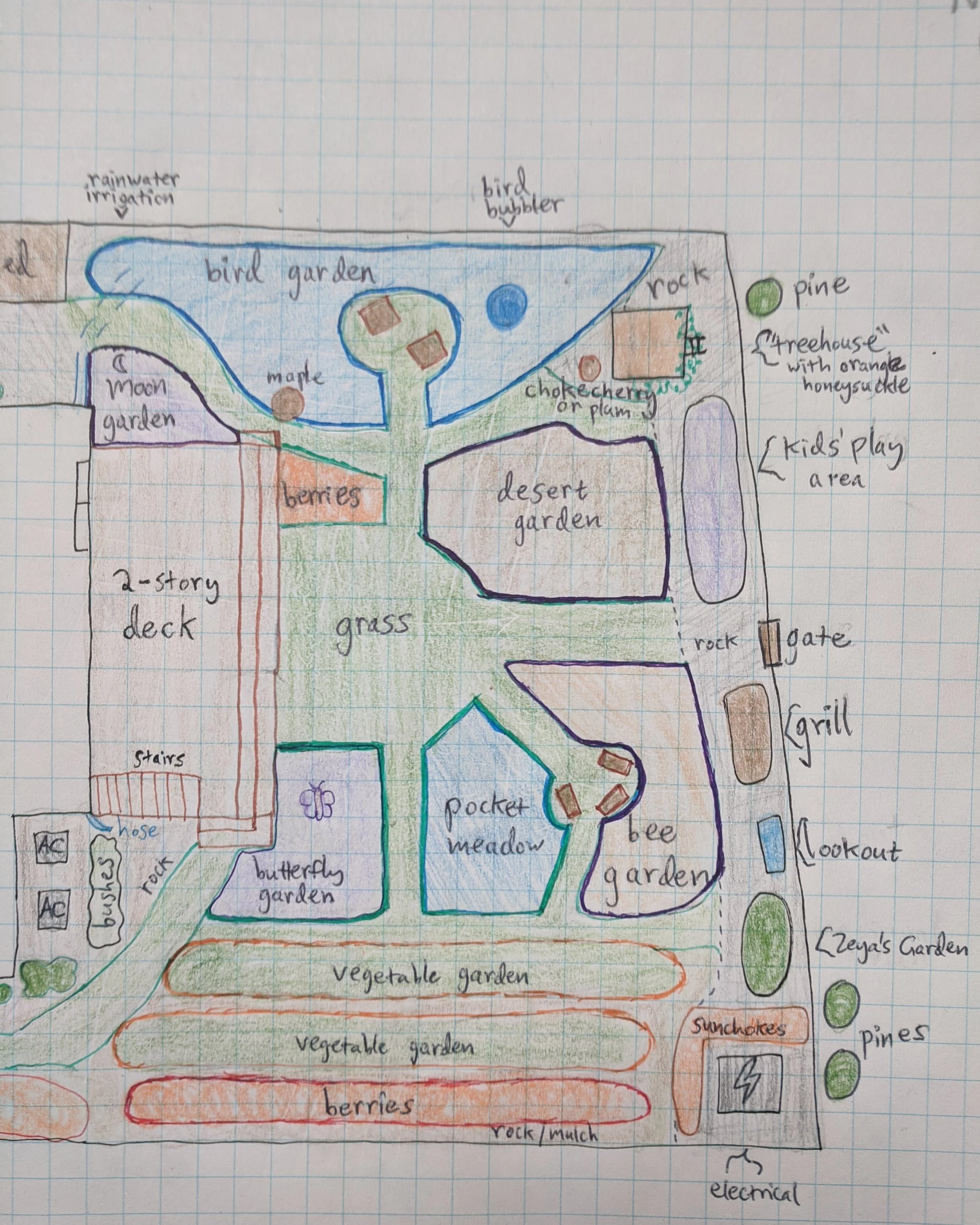Backyard Biodiversity Project, Part 2: Where to Begin?
Amy’s backyard design by Eryn Murphy of Restorative Landscape Design
This plant likes full sun but hates for its roots to dry out. This one loves a pinch of afternoon shade. You can’t put these two next to each other – when did gardening become like making seating charts for a wedding?
I was full-on, making list after list and spreadsheet after spreadsheet of potential plants based on hours of research. I wanted to support native bees, birds, butterflies, and other wildlife. I wanted to incorporate as much as possible of what my family wanted in a yard. I didn't have a good idea how to lay out a garden so it would look good, or how to choose plants from my lists and spreadsheets. I wanted harmony and kept finding indecision and stress.
“Thinking within a theme for each area f the garden made it easier to narrow down plants.”
My husband saw me over analyzing and offered to hire a garden design consultant as a Mother's Day gift. I convinced myself this wasn’t defeat so much as a savvy move for the overwhelmed. I found one that sounded perfect - focuses on native plants and food plants, takes the whole family's wishes into account, and will do as much or as little of the design, plant selection, plant purchase, landscaping, and planting as you want. I could still be involved in choosing the plants, laying them out and putting them in the ground, so I’d have ownership of the garden, and now I knew it would look on the land like it looked in my head.
Our family talked with Eryn Murphy of Restorative Landscape Design for hours about what we wanted and she laid out a general plan. It had gardens with different themes (bird, desert, butterfly, bee), a smaller native grass lawn, a huge berry area, and space for vegetable gardens. There were little sitting nooks, space for a deck and an elevated play fort and grass paths. It was perfect.
Thinking within a theme for each garden area made it easier to narrow down plants. Eryn helped me focus on native plants that would be easy to find at nurseries and would “behave” in a garden. We opted for plants that should do well in the clay soil without requiring amendments, and plants that would not require much water once established.
Some shrubs and plants that we decided to include:
Bird garden: Beaked hazelnut, elderberry, snowberry, little bluestem, redspike coneflower, blanketflower, fireweed, clammyweed, upright blue beardtongue, red birds in a tree, sunset crater penstemon, salvia azurea
Desert garden: Dwarf rabbitbrush, rabbitbrush, yucca glauca, sagebrush, plains coreopsis, fringed sage, Palmer’s penstemon, sundrops
Bee garden: Leadplant, apache plume, giant goldenrod, snakeweed, hairy goldenaster, Munro’s globemallow, tulip gentian, rocky mountain penstemon, sulphur flower buckwheat
Butterfly garden: Western sandcherry, field goldenrod, butterfly milkweed, prairie blazing star, nodding onion, anise hyssop
Also, the berry garden will have yellow currant, serviceberry, and wild strawberries (in addition to non-native berry shrubs/plants, because yards don’t need to be all native to have good habitat value).
Eryn recommended that we choose one plant with a striking texture to put in every garden to help tie them all together - we went spikey and elegant yucca glauca - and we decided to further that with consistent groundcover plants between the gardens. (A future post will cover the process of choosing groundcover.) And there it was on paper: harmony, beauty and even a little bit of bliss for each member of my family. A finer marriage of plants you won’t find.
Resources
These websites helped me to figure out what native plants I wanted.

